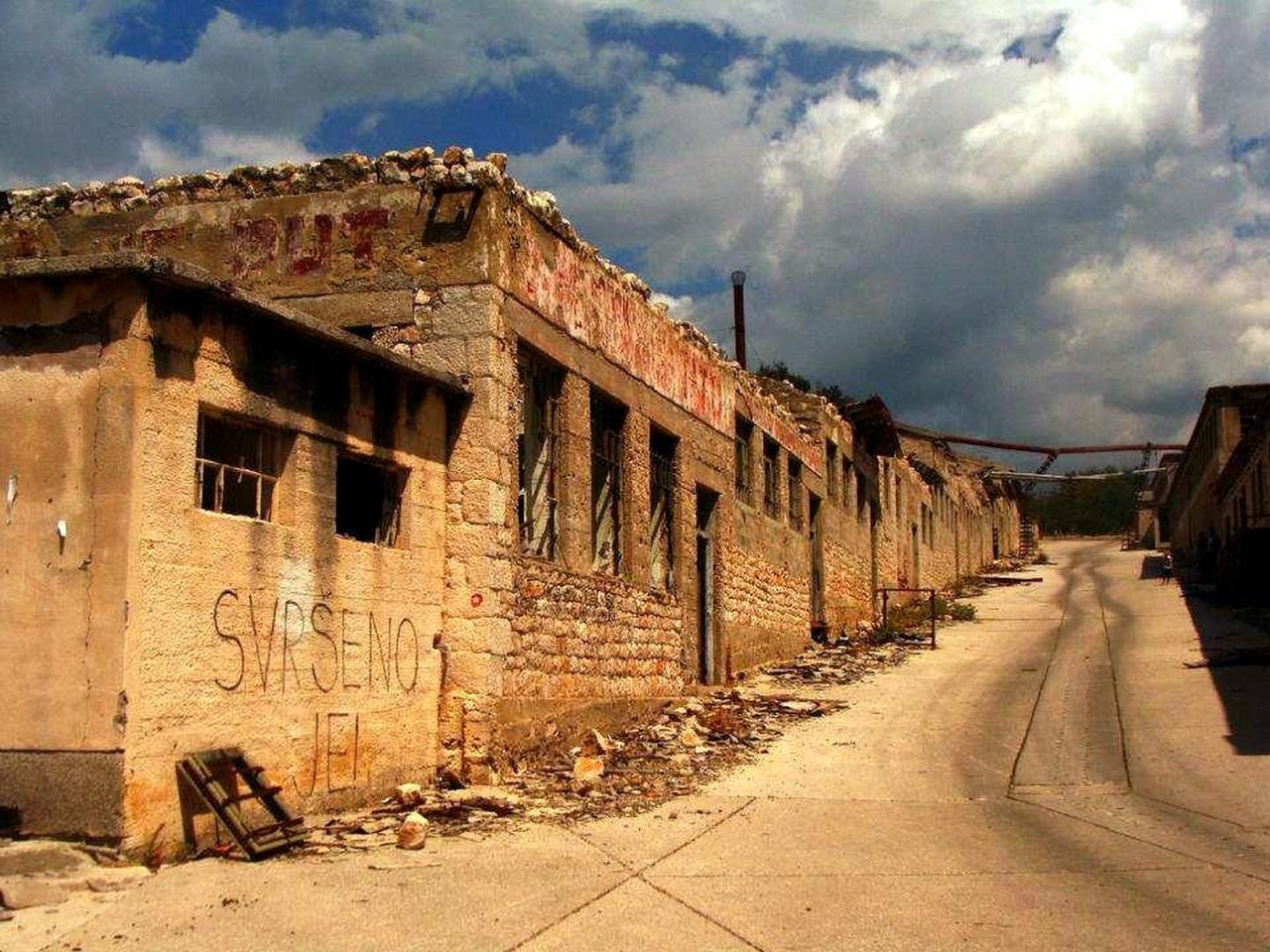 fter World War II, the new Communist leader of Yugoslavia, Josip Broz Tito, fully embraced the Stalinist model of communism in his own country. However, by 1947 he began to challenge Joseph Stalin’s supremacy as the leader of the communist world. This challenge led Stalin to expel Yugoslavia from his newly created Communist international organization. At the same time, Stalin demanded that Yugoslav Communists remove Tito from power. Faced with insecurities and fear for his political and physical survival, Tito resorted to violence against his enemies within the country. By 1949, Tito had made his version of the soviet gulags filled with political prisoners, enemies of the state, and anyone who could challenge the power of Tito’s Communist party.
fter World War II, the new Communist leader of Yugoslavia, Josip Broz Tito, fully embraced the Stalinist model of communism in his own country. However, by 1947 he began to challenge Joseph Stalin’s supremacy as the leader of the communist world. This challenge led Stalin to expel Yugoslavia from his newly created Communist international organization. At the same time, Stalin demanded that Yugoslav Communists remove Tito from power. Faced with insecurities and fear for his political and physical survival, Tito resorted to violence against his enemies within the country. By 1949, Tito had made his version of the soviet gulags filled with political prisoners, enemies of the state, and anyone who could challenge the power of Tito’s Communist party.
Yugoslavia’s Alcatraz
Tito’s most infamous political prisons were off the coast of modern-day Croatia on Goli Otok. This island prison which ran between 1949 and 1956, differed from contemporary western prisons and even the Soviet Union’s gulags. The prison’s role was not just to incarcerate the enemies of the communist state but to reform the prisoners through practicing psychologically coercive forms of reeducation.
The secret police took prisoners, most not even knowing what they were accused of, and transported them while blindfolded to the island. Milica Prokic stated in their 2016 article that new prisoners were greeted with the ritual of “Blood row,” which was the custom where current “Prisoners would align in two rows, facing each other” so they could “beat the newcomers passing between them.” In his 1982 Washington Post article, reporter Michael Dobbs said, “Those who made it to the end were required to point out which of the prisoners had not beaten them hard enough. These men were then forced to run the gauntlet themselves.” In Goli Otok, it was not the prison guards who carried out discipline but the prisoners themselves.
Once prisoners arrived at their cells, they had to admit to all their cellmates what they did, what they used to think, and what they are thinking now. If the bandits said something unsatisfactory, they were insulted, sometimes physically assaulted by their cellmates, and ostracized from all social interactions. After being ostracized and beaten repeatedly by their peers, prisoners were forced to write autobiographies from childhood to imprisonment. Prison officials then judged their autobiographies and forced prisoners to rewrite them, saying that their degenerate personality traits had led their life toward a betrayal of Tito’s state. At Goli Otok, Prison officials taught prisoners that they did not understand their past betrayal of Tito because their Freudian unconscious locked away their treacherous traits.
The prisoners who did not convert their political beliefs lived miserable lives on the island. Prisoners were in a constant state of fear due to constantly being spied on by their peers and prison officials. Even after a prisoner completed all steps to be ‘re-educated,’ they would have to help beat and degrade the new prisoners. If re-educated prisoners refused to join the collective process of dehumanizing others, they would return to the beginning of the process. As a result, the blurred lines between co-prisoners meant that no real community of the imprisoned developed, and everyone participated in the Goli Otok crime.
The Consequences of Psychological Torture
Goli Otok’s system of physical abuse, hard labor, psychological humiliation, and depersonalization devastated the inmate’s life forever. Historian Ana Antic concluded in her 2016 article that the end goal of these “Measures was not so much re-integration but in effect the disintegration of the prisoners’ personality through self-analysis.” Once released, the prisoners were greeted with a new Yugoslavia where their family and friends either did not want a relationship with them or did not recognize the person they had become. In addition, it was challenging for prisoners to gain employment, and people were afraid to interact with them for fear of being associated with a traitor.
Tito’s use of psychological torture was not historically the last of its kind. Similarly, Mao Zedong’s China, Cambodia’s Khmer Rouge, and even America’s Abu Ghraib prison used self-criticism and humiliation. Goli Otok is not some historical anomaly; abuses by threatened regimes are still present today. Psychological torture’s ability to hide any physical evidence of maltreatment makes it especially useful for perpetrators that nobody would expect.

I am a Public Historian who wants to bring to light historical stories that most people don’t know about. My other history work focuses on historic preservation and the preservation of buildings connected with the histories that built this world.





